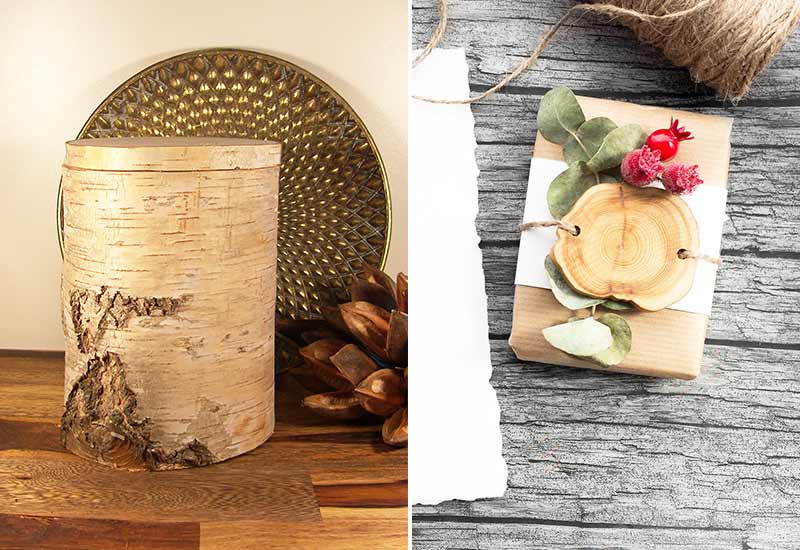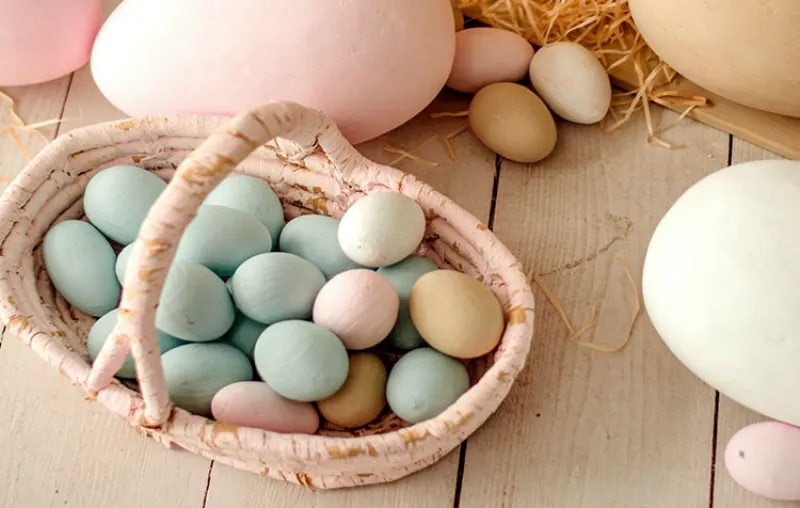How can a sustainable funeral be implemented to say goodbye to loved ones in the most environmentally friendly way possible? If you're looking for an answer to these questions, you've come to the right place. We all want live as long as possible and become stone old - but unfortunately every life comes to an end at some point.
For people who want to leave this planet in a better state than they found it, a natural, environmentally friendly burial is definitely suitable to say goodbye with dignity. Unfortunately, funerals and burials are a topic that people tend to be reluctant to talk about, which is why information is scarce. But for the burial of ashes, for example, an urn is needed, the hearse runs on gasoline and gas is used in cremation. Crematoria in Germany alone produce up to a quarter of a million tons of CO2 every year.₁ There is enormous potential here for environmental protection.
In this article, I would like to give you some valuable tips to help you make the funeral of a loved one truly sustainable.
Here you can find a short overview in advance:
- Natural forest burial
- Biodegradable urns, caskets & coffin linens
- Good accessibility of the grave
- Grave care
- Local materials
- Domestic grave decoration
- CO2 compensation of the cremation & the urn
- Invitations of the funeral service
- Digital burial
- Local & seasonal funeral feast
1. natural Forest burial

Meanwhile, burial (especially urn burial) can take place in a variety of places. The possibility of forest burial seems to be the most environmentally friendly variant of the funeral to be, since it affects nature only to a limited extent.
The urn is buried at the root of a tree during forest burial - Grave decorations, gravestones as well as a grave planting are not allowed with this type of burial. Nature is not exposed to harmful substances and natural resources are conserved - also, as there is no grave maintenance.
2. biodegradable urns, coffins & coffin washing
When looking for the right urn, it is important that you pay attention to the material of the urn. For an environmentally friendly burial come Wooden or paper urns and Cardboard coffins in Frage. Diese biologisch abbaubaren Urnen und Särge zersetzten sich, je nach Material und Bodenbeschaffenheit, in einem Zeitraum zwischen 5 und 15 Jahren. Zudem enthalten sie keine umweltschädlichen Stoffe und ermöglichen somit eine wirklich umweltverträgliche Bestattung.
Coffin linens, i.e., the blanket set and clothing of the deceased, should also be made of biodegradable cotton or linen (i.e. Natural fibers) consist. These are degraded by nature within 5 months after the coffin has decomposed. Artificial fabrics made of polyester, on the other hand, persist for decades or even centuries and are therefore not sustainable.
3. good accessibility of the grave
Short distances and good accessibility to the grave (optimally) by public transport is a significant point, so that you can Keep CO2 emissions as low as possible during and even after the funeral and farewell service can. Therefore, it is important to consider whether a local and nearby cemetery is more suitable for your planning than, for example, a forest cemetery with a long journey for the majority of the relatives.
4. grave maintenance
When it comes to grave care, flower selection is a critical factor in sustainability. Ideally you use native and perennial plants für das Grab. Diese benötigen weniger Wasser als exotische Pflanzen und im Vergleich dazu musst du sie auch nicht zu jeder Jahreszeit umpflanzen. Immer- oder wintergrüne, Bee-friendly ground coverhow the Sand thyme (Thymus serpyllum), sind beispielsweise ideal.
5. local materials

For a sustainable funeral, it's also important that you use local materials. Environmentally friendly Coffins and urns are made from local, rapidly renewable wood. The Gravestones can be made of natural stone from regional quarries. Through the use of local materials, the transport routes are ultimately shorter and the ecological footprint thus lower.
Do not be afraid to choose: Through artisan work can something very special and individual so that you can say goodbye to loved ones with dignity.
6. native grave decoration
As with grave planting, it's important when making grave decorations that you seasonally oriented and choose products grown in the local field. By choosing local flowers, you're supporting local gardeners while having a positive impact on the environment. What's more, in most cases you'll be doing it cheaper than if you preferred exotic flower varieties.
7. CO2 compensation of the cremation & the urn.
Did the deceased have any special wishes that may not be particularly lasting? The CO2 Offset the cremation or the urn offer you even after the funeral the possibility of subsequently offsetting the CO2 emissions caused.
8. invitations of the funeral service
To create a sustainable funeral, you can make the invitations for the funeral service on recycled natural paper sustainable printing let and a climate neutral shipping select. Another option for ecological invitations to the funeral celebration is a digital invitation. Here again it is important to weigh up which consumption natural resources is more bearable for you: wood or electricity.
9. digital burial
We are in the digital age. Just in the time of the Corona pandemic digital funerals were held because many relatives could not or were not allowed to attend the funeral service in person.
It may seem too impersonal to you at first, that's true. However, a digital funeral, so to speak, would be a live online funeral, at least an environmentally friendly alternative for those who would have a very long journey to get there. With a digital funeral, you can significantly reduce CO2 emissions by saving travel to and from the funeral.
10. local & seasonal funeral feast

The funeral reception takes place after the funeral service and is a important part in our mourning culture. Common memories with the deceased are shared and mutual support, comfort and understanding are given.
For a sustainable version of the funeral feast, it's best to choose a café or restaurant within walking distance of the cemetery. Additionally, for an environmentally friendly funeral service, you can also opt for an vegetable, regional and seasonal cuisine value.
Even a funeral can be made sustainable
Whether you're looking ahead to your own funeral or planning and organizing the burial of someone close, these tips are guaranteed to make it easier for you to do so in the most environmentally friendly way possible.
However, since the funeral is also a very sensitive subject, the personal wishes and ideas of the deceased person should always be taken into account and have priority over sustainability. After all, honoring and remembering the beloved, deceased person is the most important thing and should not be forgotten.
Do you have any questions, suggestions or tips for a sustainable funeral? Then I look forward to your comment under this post.
Stay sustainable and say goodbye peacefully,

PS.: There are countless Things that especially many dying people regret at the end of their lives. In the linked article I present them to you. Use them for personal inspiration so that you don't have to regret anything when you too are on your deathbed at some point.
References:
₁ S. Fründt: Germany's first climate-neutral crematorium (as of 05.02.2022), available at https://www.welt.de/wirtschaft/article236678657/Bestattungen-Das-erste-klimaneutrale-Krematorium-Deutschlands.html. [29.11.2022].







The natural forest burial sounds beautiful. I could also imagine that for myself. When should someone start to organize a funeral?
Hi Jim. Of course, at the latest when a familiar person has died or is dying.
Many greetings,
Christoph
Comments are closed.